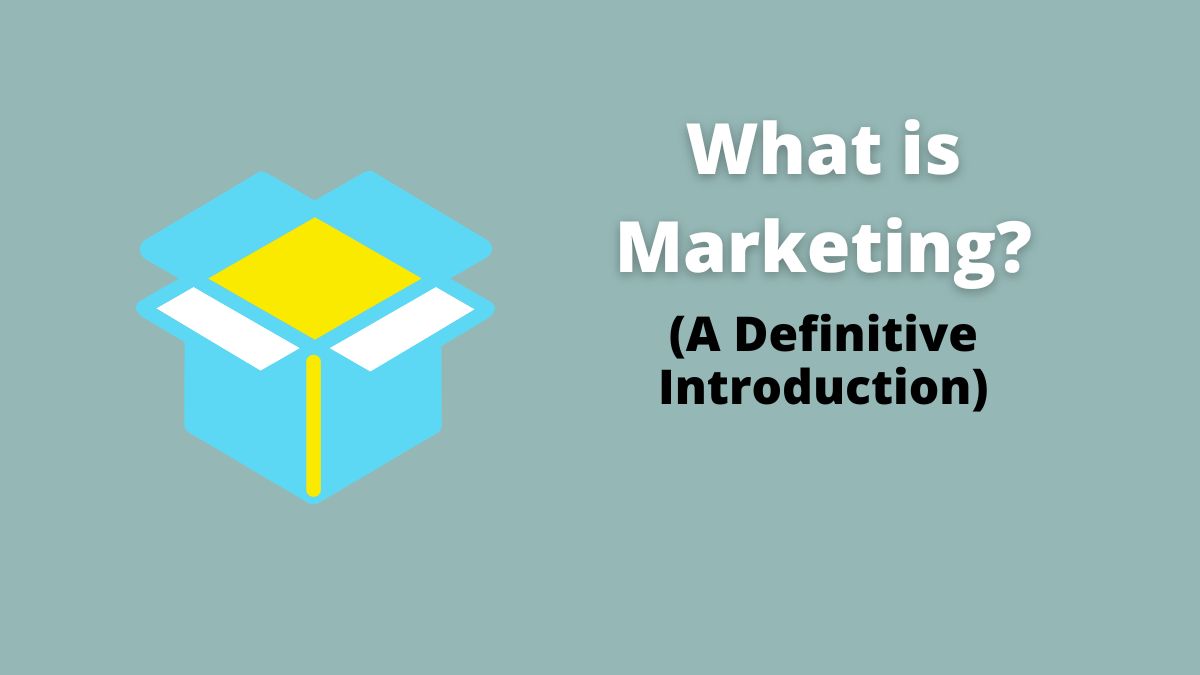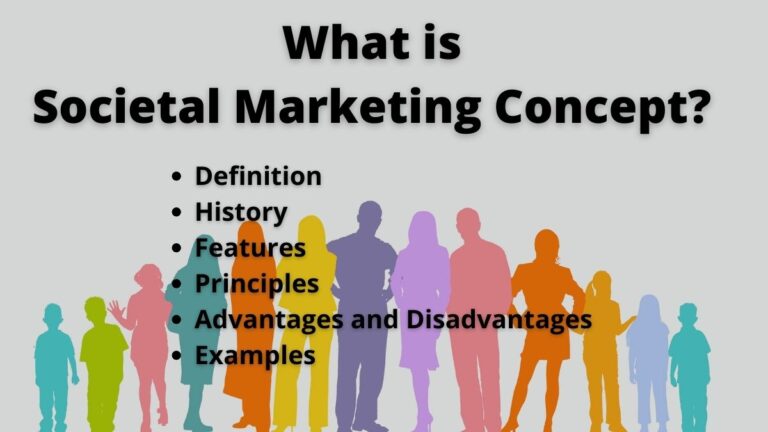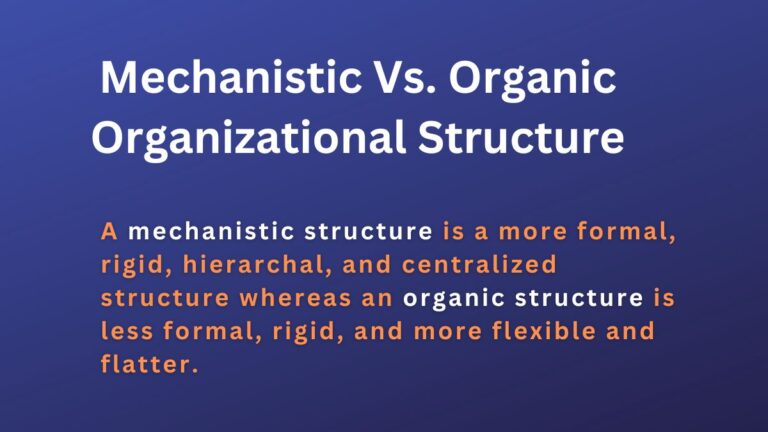What is Marketing? Definition, Objective, Core Elements, Principles, Types, and Importance
You may have heard marketing as selling products, attracting customers, building customer relationships, or in many ways. As it is understood in many ways in many situations. Here we will discuss its definition, objectives, core elements, types, 4 & 7 Ps, and importance.
What is Marketing?
Marketing is the process of informing and attracting potential customers about a company’s offerings (goods or services) through high-quality messages. It encompasses all the activities and strategies companies initiate to attract potential customers to their products.
Marketing is a continuous process, it does not remain a single step – it includes marketing research, product development, pricing, promotion, building customer relations, increasing brand image, attracting diverse customers, making sales, and increasing ROI, and customer satisfaction.
The main goal of marketing is to increase the company’s profit and customer satisfaction. It starts with a need and ends with customer satisfaction and all the activities including between determine whether or not the marketing strategy will succeed. If the marketing effort achieves customer satisfaction, it is considered successful, and vice versa.
AMA has defined marketing which is very influential in this 21st century as”It is the activity, set of institutions, and processes for creating, communicating, delivering, and exchanging offerings that have value for customers, clients, partners, and society at large.”
The history of marketing is as old as human civilization. The human civilization is evidence of how marketing evolved long ago and how it is going. Its earliest form is known as a barter system. And, today it has entered the digital world.
What is the Objective of Marketing?
Marketing efforts are not just made for coincidence they are made with certain objectives. It is not just about making people purchase your offerings it is more than that which includes building lasting relationships, providing value, and more. Some of its main objectives are:
- To make customers aware of companies’ offerings.
- To attract potential customers.
- To build long-term relationships with customers.
- To achieve certain objectives that may be a brand image, customer value, and profit.
- To increase the company’s sales, ROI, and profit.
- To achieve customer satisfaction.
Core Elements of Marketing
Have you ever wondered what makes marketing a complete system? Below are the fundamental elements every marketing is made up of.
Need, Want, and Demand
As I earlier said marketing starts with a need. The need is the condition of felt deprivation. Want is the desire to satisfy our needs. And, demand is the ability and willingness to buy something to satisfy wants and needs.
Product, Service, and Experience
Products, services, and experiences are the means to satisfy our human needs and want. The product may be in physical form, service in intangible form and experience is what we get after using the product or service.
Related: What is Actual Product?
Market
The market is the place where transactions and exchanges of goods and services take place. It can be anywhere either offline or online.
Exchange, Transaction, and Relationship
Exchange means getting something by giving something. Transaction means getting something by giving something by means of monetary terms. A transaction is always made in terms of money. And, relationship refers to establishing good and long-term relationships with customers.
Customer Value and Satisfaction
It is the final stage of marketing – as I said its success is determined by customer satisfaction you as a marketer must accomplish the above-mentioned elements to achieve customer value and satisfaction.
Customer value is the feeling of worth customers get after using your offerings. And, customer satisfaction is matching with customers’ expectations from your offerings and even exceeding their expectations.
Related: What is STP Marketing?
4 Ps and 7Ps of Marketing
These Ps are the main elements and are also commonly known as the marketing mix or principles of marketing. The first 4 Ps (product, price, place, and promotion) are related to the physical products, and the later 3 Ps (people, process, physical evidence) with service.
These (4+3) 7P’s effective combination largely determines the gaining of overall success from the marketing strategy and effort. In 1960, E. Jerome McCarthy developed the concept of 4Ps and additional 3Ps by Booms & Bitner in 1981.
Product
Product is something that your company offers to customers. That may be physical or intangible but it should have the quality to satisfy customers’ needs and wants.
Your product should be right – for this market research, analysis of competitors’ products, what features and quality products other companies are offering, etc. You should make your product stand out in the market, better perform than competitors, and attract more customers.
Price
Price is what your company puts for the products or it is the amount consumers will pay to buy your company’s products. You should not determine a product’s price by coincidence or emotions.
You should consider the production costs, and administrative costs, study competitors’ pricing patterns, and customers’ ability to buy. A lower price may not give you enough money to cover your expenses whereas higher prices won’t get you more sales. Thus your product’s price should match with company’s expenses, compete with competitors, and be affordable to customers.
Place or Distribution
Place i.e. distribution is the third component of the marketing mix. The place is where customers will buy your products. You should choose the right place where customer demand is high and accessible to mass customers.
Before choosing the right place, do research, analyze, and evaluate the ideal market locations that easily convert leads into actual customers. In addition, should ensure the delivery of the right product to the right place at the right time.
Promotion
Promotion is an action companies take to inform and communicate their offering to different customers to attract them, persuade them, and make the leads actually buy the products. During the promotion, you will likely use tools like advertising, personal selling, public relations, social media promotions, etc.
In the promotion process, you will convince the potential customers why should they buy your products and not competitors. All efforts include convincing the customers to buy directly or indirectly.
People
Here people refer to sales personnel who interact with customers and the customers who likely buy your company’s products. You should have quality sales personnel who better interact with customers, build a positive attitude of customers toward your company, and increase sales and customer satisfaction.
Process
The process refers to how you serve the customers. It refers to the time and quality you maintain between the customer’s request and the service offered. The shorter and sweeter the process the better the customer’s experience will be.
Physical Evidence
Product quality and good customer service do not always determine customer satisfaction. In 1981, with the introduction of 3 additional P’s Booms & Bitner defined the physical atmosphere of the company as also having a significant impact on customer satisfaction. A clean and managed office structure or e-commerce layout induces customers to stay and look more at a company’s offers.
Types of Marketing
The types of marketing you choose depend upon your product’s nature and the company’s policy. There are literally numerous types of marketing – some of them are mentioned below:
- Product Marketing – It refers to the idea of communication of physical products to the target customers.
- Service Marketing – It involves making aware and attracting potential customers to your service i.e. intangible products.
- Internet Marketing – Involves making an online presence of your business.
- Search Engine Optimization (SEO) – It is the process of optimization of your business website or content on different search engines.
- Social Media Marketing – This includes getting customer attention by using different social media like Facebook, Twitter, LinkedIn, etc.
- Video Marketing – Now marketers are not just making promotion campaigns they are also creating different videos of their products that educate and entertain the customers and that ultimately influence them to buy.
Importance of Marketing
You can not be sure that when you make products customers will automatically come to your door to buy the products. It has become just a myth in these modern days. It is the days of the internet and social media where people are already informed about the product prior to its launch.
As the importance of marketing is increasing it has also become harder and harder. Companies have to invest early in product advertisements to get attention and attract diverse customers. Here are some of the help it can bring to your business.
- It raises awareness about your brand.
- Attracts diverse potential customers.
- In terms of your online business or e-commerce store, it will drive you huge traffic.
- Builds trust and relationships with customers.
- Increases customer satisfaction.
- Helps to generate more sales and increase the company’s profits.
- Generates new customers and increases market coverage.
- Builds a good presence in the public.
Hence…
In Conclusion… while marketing is essential for your business success you should identify, satisfy, and retain customers and adopt strategies that let you stand ahead of the competitors. As it is a continuous process, you should be updated and employ new marketing strategies that can chase the change.
Read Next: Production Concept in Marketing
Sajan Kushmi is a content writer with more than 4 years of experience. He holds BIM Degree. He write on the topics related to Management, Marketing, and Entrepreneurship.






